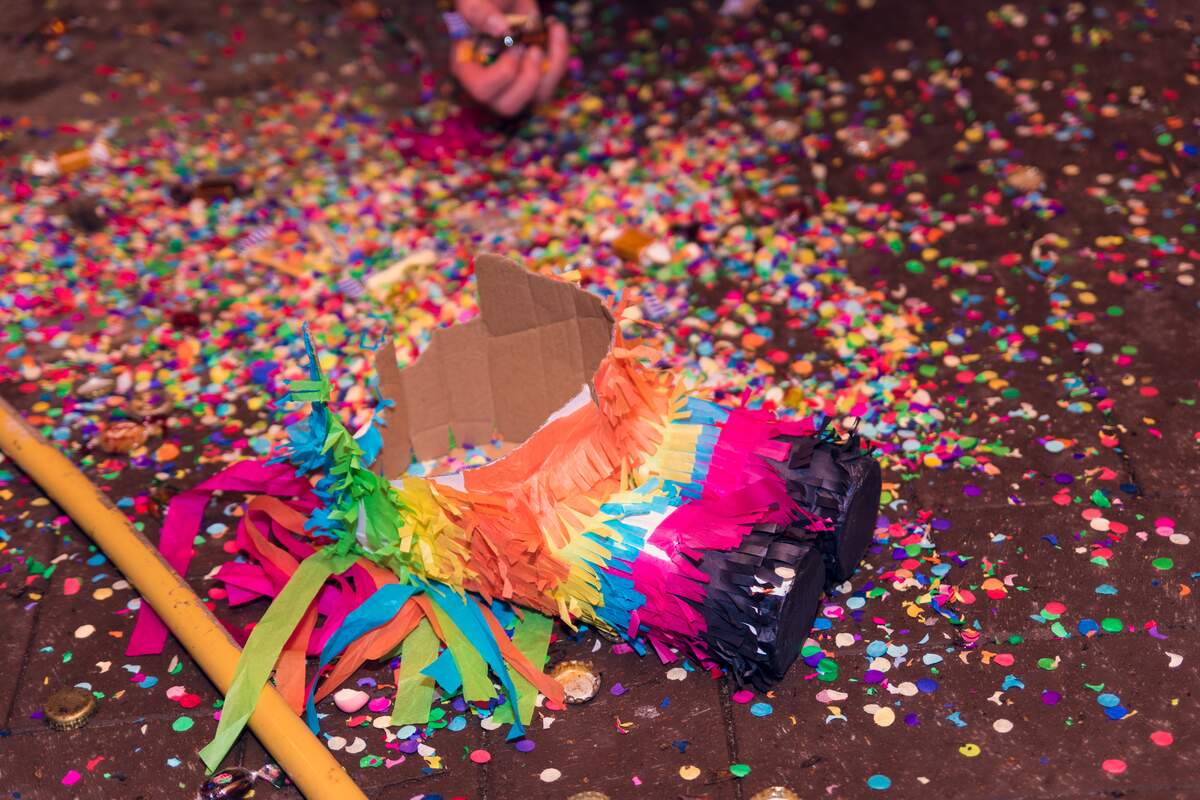

Piñata Day
Observed
annually on April 18th (since 2016)
Dates
Founded by
Cozy Reverie on April 18th, 2016
Tags
Fun & Games
Hashtags
Sources
Created by Cozy Reverie, Piñata Day is "about celebrating the ultimate party prop," the piñata, by making or buying one and then having a good whack at it with a stick. Piñatas were first made out of clay pots. Today they are commonly made of clay pots covered with papier-mâché, or solely with papier-mâché. They are frequently painted or covered with bright tissue paper, and are then hung from a rope. At parties, children are blindfolded and spun a few times, before attempting to hit one. An adult will pull the rope to make the piñata go up and down, making it more difficult to be hit. Children take turns until it bursts or breaks open and candy, small toys, or fruit falls to the ground, which children rush to get. It is not uncommon for adults to participate in trying to hit a piñata as well.
Piñatas are thought to have originated in China. There they were used in New Year celebrations. They were formed into buffaloes, cows, and oxen, filled with seeds, covered with colored paper, and decorated with ribbons. After being hit with sticks until they opened, their remnants were burned, and the ashes were saved and used to bring good luck throughout the upcoming year.
Piñatas were brought to Italy by Marco Polo in the thirteenth century and came into favor there during the following century. It is believed that the word piñata came from the Italian word pignatta, which means "clay pot." Following their rise in Italy, piñatas gained popularity in Spain, where they were commonly used during Lent.
In the sixteenth century, friars introduced piñatas to Mexico—the country they are most associated with today—where they became steeped in religious symbolism. They were formed into the shape of a seven-coned star, with each cone standing for one of the deadly sins. Their bright colors represented the temptation to fall into those sins. Blindfolding represented faith, as someone swinging a stick had to blindly do so and have faith they would be successful. Those gathered around could encourage or deceive the person behind the blindfold, just like how they could do the same to someone walking through life by faith.
After being given a stick, which represented virtue and the will to overcome sin, the blindfolded person was spun around 33 times before swinging, which represented the years that Jesus lived. When the piñata was broken open, it meant that good had won over evil, that faith and virtue overcame sin, and that heavenly rewards were received. The candy and other treats that fell from the piñata represented those heavenly rewards. In the past—and often still today—piñatas were used in Mexico during the 12 days before Christmas, which is known as Las Posadas. Today, piñatas are an important part of parties in Mexico, especially birthday parties, particularly those held for children.
A similar tradition to the one that was brought to Mexico in the sixteenth century already was happening in the Americas at the time. The Aztecs filled clay jars with offerings and decorated them with feathers. They broke them open as an offering at the feet of Huitzilopochtli, their god of war. Similarly, the Mayans suspended clay pots on strings and had someone who had their eyes covered hit them.
Around the world, piñatas are hung on ropes and hit by children and adults alike. Star-shaped piñatas are still common during Las Posadas, but piñatas are otherwise often formed into animals, superheroes, cartoon characters, and characters from children's movies. Today, piñatas are bought, made, and swung at, until the bounty inside of them spills to the ground and is gathered up by eager spectators.
How to Observe Piñata Day
Celebrate the day by buying or making a piñata. You could make one into an animal, make a seven-coned star piñata like the type used during Las Posadas, or make one of many others. There are plenty of things you could fill your piñata with, such as candy, fruit, or small toys. Hosting a party where your piñata is used is a great idea. You could also share photos or videos of your piñata online. Make sure to use the hashtag #piñataday.





















